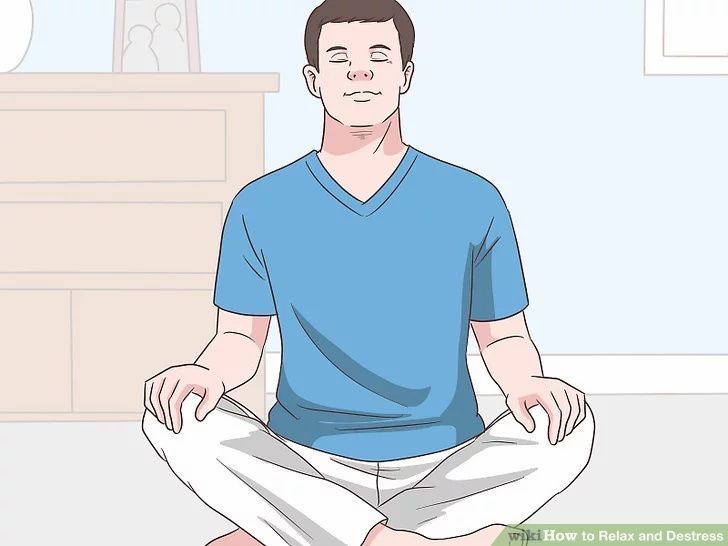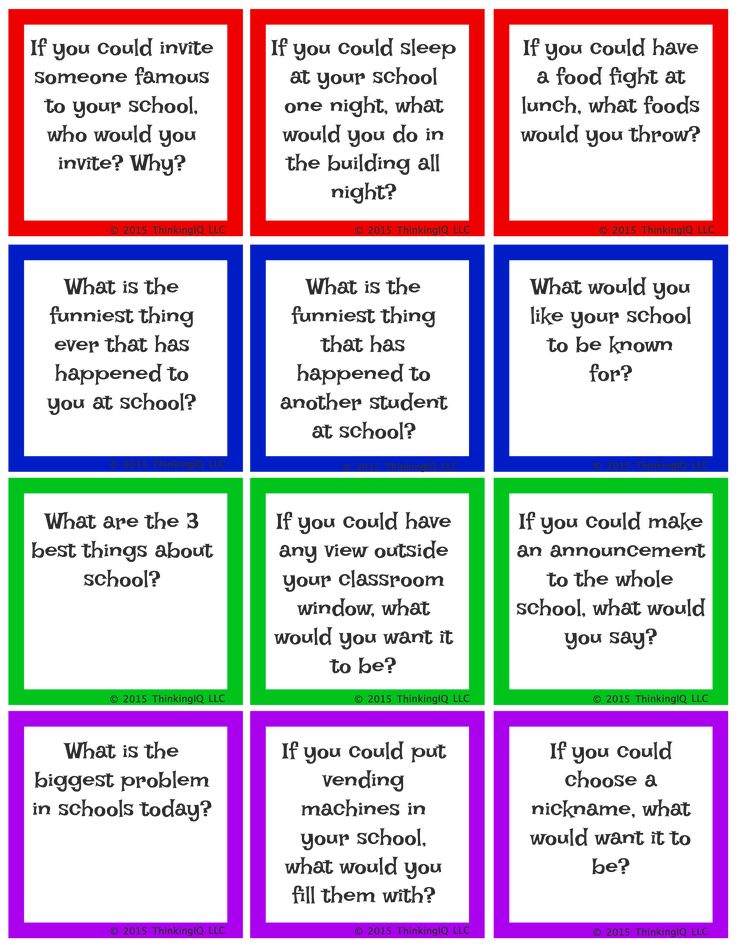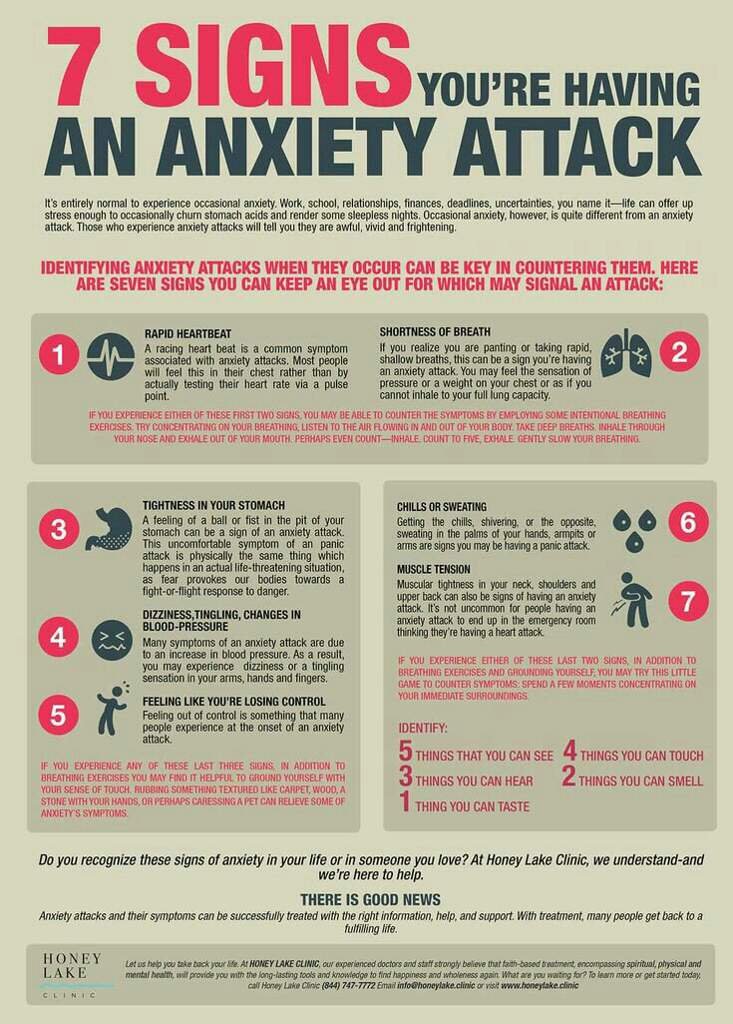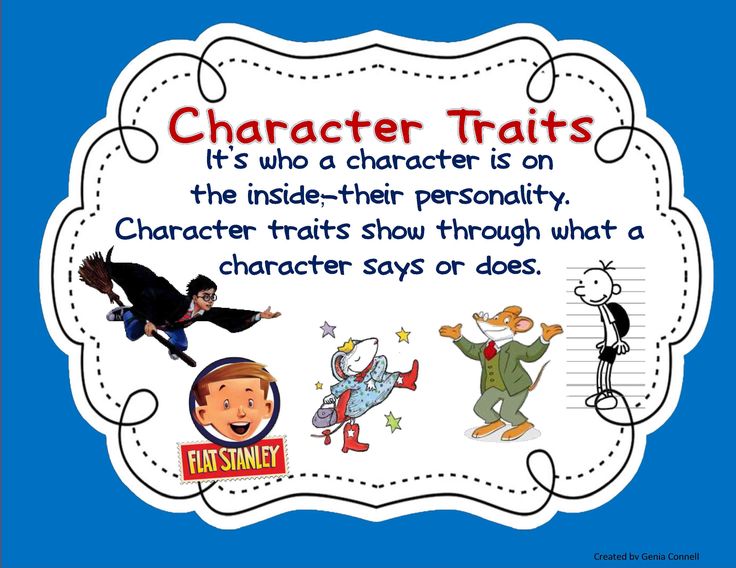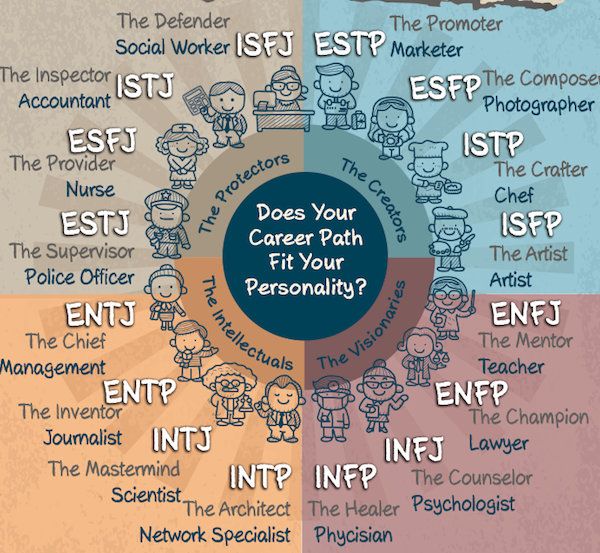How to relax when having anxiety
How to Calm Down Fast
When stress, anxiety or fear flare up, these 9 techniques help keep you calmer.
Spread the love
We all get stressed and agitated sometimes. It’s a product of our busy, over-scheduled lives and living with circumstances we can’t control.
When you’re stressed or anxious, it causes your body to release stress hormones such as cortisol and adrenaline, which can increase how stressed you feel. You may also feel other symptoms, like headaches, dizziness and depression. Long term stress can negatively affect your weight, heart and chronic health conditions. In addition to your physical health, untreated stress can have a negative effect on other areas of your life, including your mental health, professional life and social relationships.
When you’re feeling stressed, anxious, scared or nervous – or you have the urge to lash out – the last thing you want to hear someone say is, “Just calm down.” That never works. But here are 9 calming techniques that do work – and they work quickly at that.
- Just breathe. Breathing seems like the most natural thing in the world. But there are ways to breathe mindfully that help calm our bodies and minds almost instantly. The 4-7-8 breathing technique, known as a “relaxing breath,” is especially effective:
-
-
-
- Breathe in quietly through your nose for 4 seconds
- Hold the breath for 7 seconds
- Exhale forcefully through your mouth with a “whooshing” sound for 8 seconds
- Repeat as needed
-
-
-
- Close your eyes and count to 10 slowly. It really works! If you need more time, count to 20 or count backwards once you reach whatever number you are counting up to. Just taking a few minutes to concentrate on something other than your stress will do wonders for your mood.
- Chew a piece of gum. Studies show that the slow, methodical act of chewing gum keeps blood flowing to the brain, allowing you to concentrate better and keep a level head during a bout of anxiety.
 It also helps you resist the urge to reach for a less-healthy option, like a pint of ice cream or a cocktail, when you’re stressed.
It also helps you resist the urge to reach for a less-healthy option, like a pint of ice cream or a cocktail, when you’re stressed. - Phone a friend – preferably a funny one. Touching base with someone you love can provide instant calm. Laughing is proven to release endorphins, the “feel-good chemicals” in our brains that help release tension and elevate overall mood.
- Smell lavender. Light a lavender candle or soak in a lavender bubble bath. In aromatherapy, lavender is one of the stars of stress-relief, along with chamomile, rose, ylang-ylang and citrus.
- Curl up with your cat or dog. Just 10 minutes of petting your furry pal can reduce stress hormones and promote a feeling of calmness.
- Listen to calming music. Cue up your favorite tune, but nothing with a frantic beat or depressing lyrics. Then sit back, close your eyes and concentrate on the words and the rhythm. Go ahead and sing along if you wish.
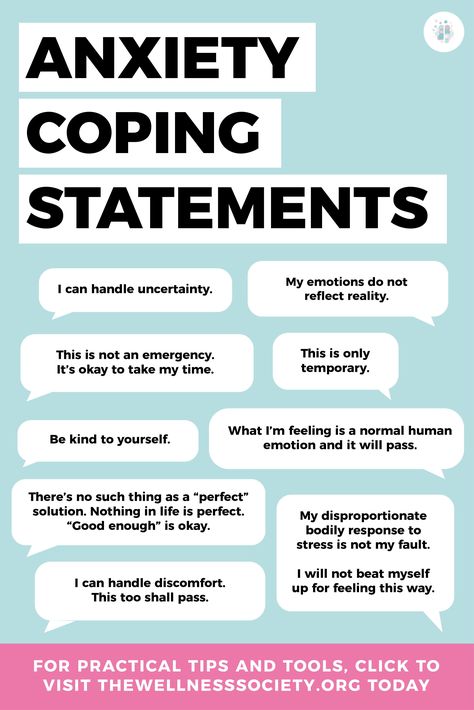 Studies show singing releases endorphins.
Studies show singing releases endorphins. - Exercise your body. Physical activity of any kind helps release stress. Take a 15-minute timeout for a brisk walk around the neighborhood; the fresh air will also help clear your head. If you’re stuck indoors, try a few reps of jumping jacks, jog up and down the stairs or take a spin on your exercise bike.
- Exercise your mind and spirit. Practice yoga, meditate, get a massage, write in your journal, give yourself a pedicure or take a relaxing nap.
If you find these calming techniques aren’t helpful, explore other methods that may provide longer-term relief for your stress and anxiety. Eat right, avoid alcohol and caffeine, exercise regularly, always get enough sleep, and if needed, consider making an appointment with a mental health professional.
Copyright 2020 © Baldwin Publishing, Inc. All rights reserved.
Health eCooking® is a registered trademark of Baldwin Publishing, Inc.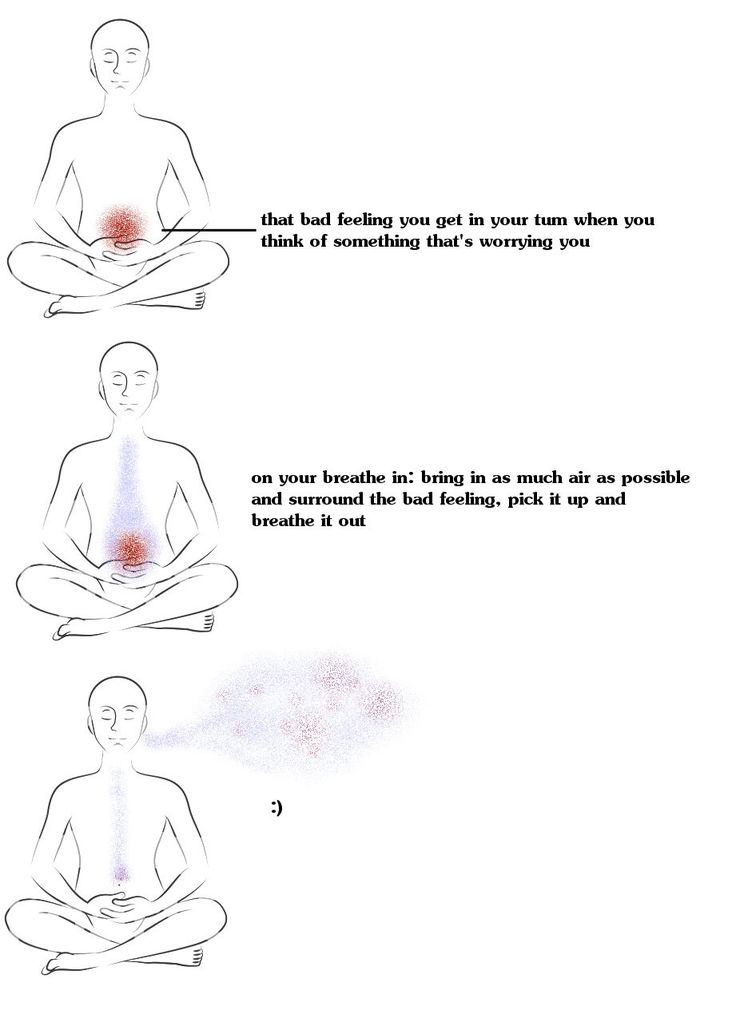 Cook eKitchen™ is a designated trademark of Baldwin Publishing, Inc. Any duplication or distribution of the information contained herein without the express approval of Baldwin Publishing, Inc. is strictly prohibited.
Cook eKitchen™ is a designated trademark of Baldwin Publishing, Inc. Any duplication or distribution of the information contained herein without the express approval of Baldwin Publishing, Inc. is strictly prohibited.
Date Last Reviewed: November 13, 2020
Editorial Review: Andrea Cohen, Editorial Director, Baldwin Publishing, Inc. Contact Editor
Medical Review: Perry Pitkow, MD
Learn more about Baldwin Publishing Inc. editorial policy, privacy policy, ADA compliance and sponsorship policy.
No information provided by Baldwin Publishing, Inc. in any article is a substitute for medical advice or treatment for any medical condition. Baldwin Publishing, Inc. strongly suggests that you use this information in consultation with your doctor or other health professional. Use or viewing of any Baldwin Publishing, Inc. article signifies your understanding and agreement to the disclaimer and acceptance of these terms of use.
How to Ease Your Anxiety
Everyone feels anxious from time to time.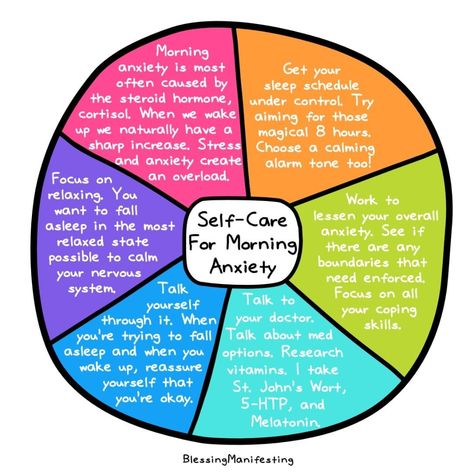 Occasional anxiety is a normal reaction to uncertainty about what’s going to happen next, whether that’s in the next few minutes, days, or months.
Occasional anxiety is a normal reaction to uncertainty about what’s going to happen next, whether that’s in the next few minutes, days, or months.
Mental health experts define anxiety as worry over a threat that’s still in your future. Thinking about a conversation you dread, for example, could twist your stomach into knots days before it happens. Your heart may race before an exam or presentation. You might lie awake at night worried about whether you’ll catch COVID-19 at the grocery store.
It’s also normal to want to get rid of those uncomfortable, pit-of-the-stomach feelings as quickly as possible. But that approach can make you more anxious, says David H. Rosmarin, PhD, associate professor of psychology at Harvard Medical School in Boston.
“When you worry about getting rid of your anxiety, you’re signaling your nervous system that you have even more to be anxious about. And that makes your anxiety worse,” he says.
Keep in mind that if your anxiety is long-lasting and interferes with your daily life, you could have an anxiety disorder.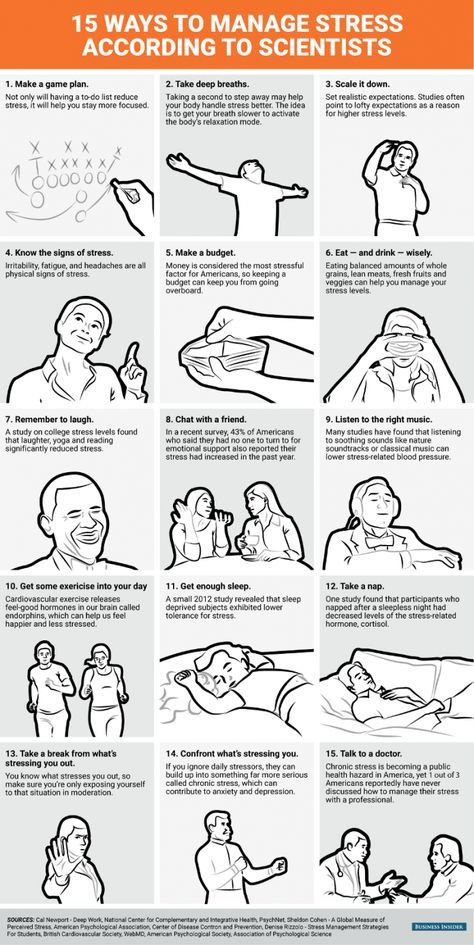 In that case, you may need treatment to overcome it.
In that case, you may need treatment to overcome it.
Calm Anxiety by Accepting It
It’s not what people expect to hear. But one of the most effective ways to ease occasional anxiety is to accept it, says Rosmarin, who is also founder of the Center for Anxiety in New York City.
“When we let anxiety run its course in the moment without fighting it, ironically, that makes it less. On the other hand, fighting anxiety is what typically [triggers] a panic attack,” he says.
“And, if your only strategy is to distract yourself from your anxiety or to avoid things that cause it, you’ll always be afraid of it. It’s always going to be the bully in the schoolyard because you’ve never learned to deal with it.”
The Anxiety and Depression Association of America puts it this way: “The thoughts you resist persist.”
Try these steps instead:
Recognize and understand your anxiety: Tell yourself, “My nervous system is kicking into high gear because I’m worried about [thing X].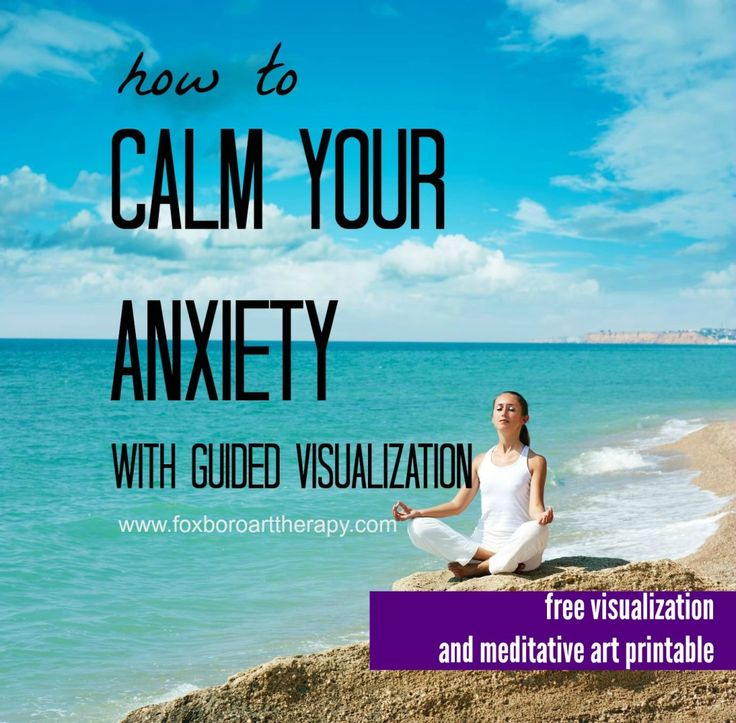 ”
”
Don’t criticize yourself for those feelings: Instead, say, “This is a normal, healthy response by my body to these circumstances, which are complicated, stressful, or difficult. It’s OK to feel this way.”
Know that you can have anxiety and still function well: “You can perform very well with anxiety, and probably have done so before,” Rosmarin says.
Think back to a time when you were anxious but did what you needed to do anyway. Maybe you were filled with anxiety before an event or a meeting. But later, someone said you did a great job.
How to Stop Anxiety
When your anxiety feels overwhelming, these techniques can give you quick, short-term relief.
Do a reality check: Ask yourself these questions:
- On scale of 1 to 100, how likely is it that the thing I’m anxious about will happen?
- Do I have good reasons to think something will go wrong?
- Is there a chance I’m overly worried?
Share your anxiety with someone you trust: Don’t avoid your anxious thoughts, which can make them worse.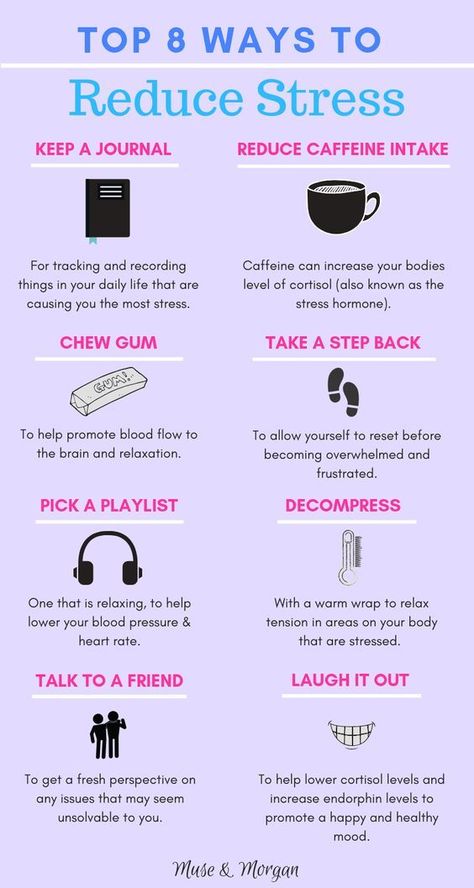 Talk them over with a friend or family member, who can help you put them in perspective.
Talk them over with a friend or family member, who can help you put them in perspective.
Remind yourself that you’re safe: “When anxiety kicks in you may feel scared or out of control, with your mind racing to all these uncertain future catastrophes,” says clinical psychologist Debra Kissen, PhD, chief executive officer of Light On Anxiety CBT Treatment Centers in the Chicago area.
“Ask yourself, ‘Is there a real danger in front of me, or am I actually safe at home and worried about something that’s no threat to me right now?’” she says. “This thinking can ground you in the moment and reboot your brain and body so you feel less anxious.”
Redirect nervous energy: Anxiety can be like a motor revving, says licensed professional counselor Lisa Henderson. “Take control of that energy and put it somewhere else,” says Henderson, co-founder and chief executive officer of Synchronous Health in Nashville.
“If you’re sitting there worried, for example, get up and walk or pace,” she says. “Take a few minutes to clean something. Go outside for 5 minutes. Shorts bursts of activity can release that anxious energy.”
“Take a few minutes to clean something. Go outside for 5 minutes. Shorts bursts of activity can release that anxious energy.”
Take a mental break: “Use a guided imagery app or simply daydream on your own,” Henderson says. “A brief mental vacation can break the cycle of anxious thoughts.”
To try this on your own, set a timer for a few minutes, close your eyes, and picture yourself somewhere you feel peaceful or happy.
“Just letting your mind wander can work well if your anxiety comes from feeling controlled or managed,” Henderson says. “If your mind returns to its anxious thoughts, notice -- without judgment -- that it’s happened and mentally tell your anxiety ‘I’ll be with you in a moment.’ Then go back to your daydream.”
You may prefer an app that guides you through your thoughts to help you release anxiety. Find relaxation or meditation apps that appeal to you and give them try.
Just breathe: Inhale and exhale slowly, evenly, and deeply for several breaths.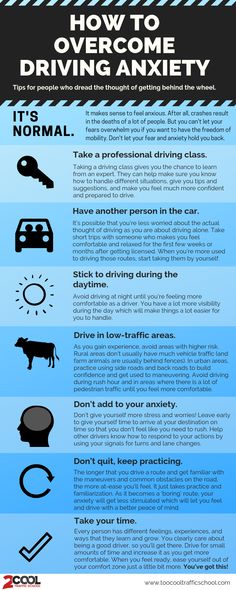
Change your position: “Whatever you’re doing, do the opposite,” Kissen says. “If you’re hunched over with worry, stand up and take a Wonder Woman pose. If you’re under a blanket, go wash your face with cold water. Changing your sensory experience can ‘change the channel’ from anxiety.”
Use a mantra: A mantra can shift your mind away from anxious thoughts that play over and over in your head, Kissen says.
Two she likes are: “These thoughts are uncomfortable, but not dangerous,” and “This, too, will pass.”
Put your anxiety on a schedule: Pick a 15-minute window during the day to think about your anxieties. “During that time, tell your brain to just go for it and let the anxious thoughts come,” Kissen says. “But when they arise outside that time, tell them ‘I’m willing to hear you, but come back tomorrow at 3 p.m.’”
If anxiety keeps you awake, get up: “If you’re lying in bed worrying about things for more than 5 minutes, get up and go to another room and write down your anxieties,” Kissen says.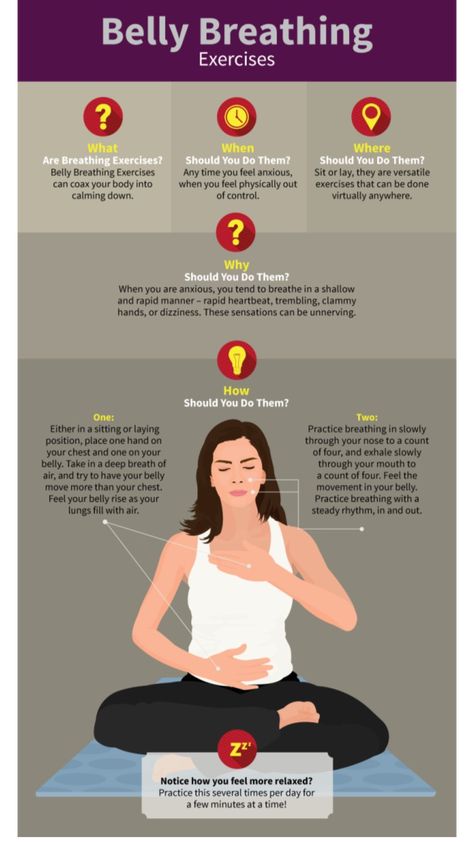 “Go back to bed when you’re tired, but get up again if you feel anxious. It might take a few nights of going back and forth, but this exercise can train your brain that your bed is for sleep, not for anxiety.”
“Go back to bed when you’re tired, but get up again if you feel anxious. It might take a few nights of going back and forth, but this exercise can train your brain that your bed is for sleep, not for anxiety.”
Do I Need Treatment for Anxiety?
There’s a lot you can do on your own to relieve anxiety, but sometimes you need help. Psychotherapy and medication are the two main treatments for anxiety disorders.
Signs that it’s time to talk to a mental health professional include:
- Constant or nearly constant anxiety
- Anxiety that gets in the way of your daily activities, like work or social life
- Anxiety about things that don’t actually threaten you
- Panic attacks
Check your health insurance policy to see what mental health services your plan covers. Then, review a list of your in-network providers to find one to connect with.
“You don’t want to add to your anxiety by paying big out-of-pocket fees,” Kissen says.
Your primary care doctor may also be able to recommend a mental health professional with experience treating anxiety and anxiety disorders.
Rosmarin notes that it’s important to find a provider you click with and trust. He also says therapy doesn’t need to go on indefinitely to be effective.
“A course of cognitive behavioral therapy for anxiety may be eight to 10 sessions,” he says. “There’s also data to suggest that people feel substantially better after just one therapy session for panic disorder.”
Exercises to help with anxiety
Anxiety is a normal and natural feeling that everyone experiences at some point in their lives. However, sometimes excessive anxiety can get in the way of a healthy and happy life. And overcoming anxiety is not easy. In such cases, quite simple exercises will help to relax and feel relief. To feel relief from feelings of anxiety, the following exercises can be done anywhere and anytime. The main goal is to quickly relax and calm down.
Contents
- 1. Relaxing breath
- 2. Relax by visualizing
- 3.
 Muscle relaxation
Muscle relaxation - 4. Relaxation counting
- 5. Relaxation, interrupting anxious thinking
1. Relaxing breath.
During an anxiety attack, the pulse and breathing speed up, excessive sweating and sometimes even dizziness may occur. At such times, breath control can help to relax both body and mind. To take control of your breathing during an anxiety attack, follow these steps:
- Sit in a quiet place. Place one hand on your chest and the other on your stomach. When taking a deep breath, the stomach should move more than the chest. Inhale slowly through the nose and exhale through the mouth. It is necessary to repeat the exercise at least 10 times, or until there is a feeling that the anxiety is decreasing.
2. Relax by visualizing.
Probably every person is familiar with the expression "to find your happy place." Creating a false picture of a place that makes you feel calm can actually calm your mind and body.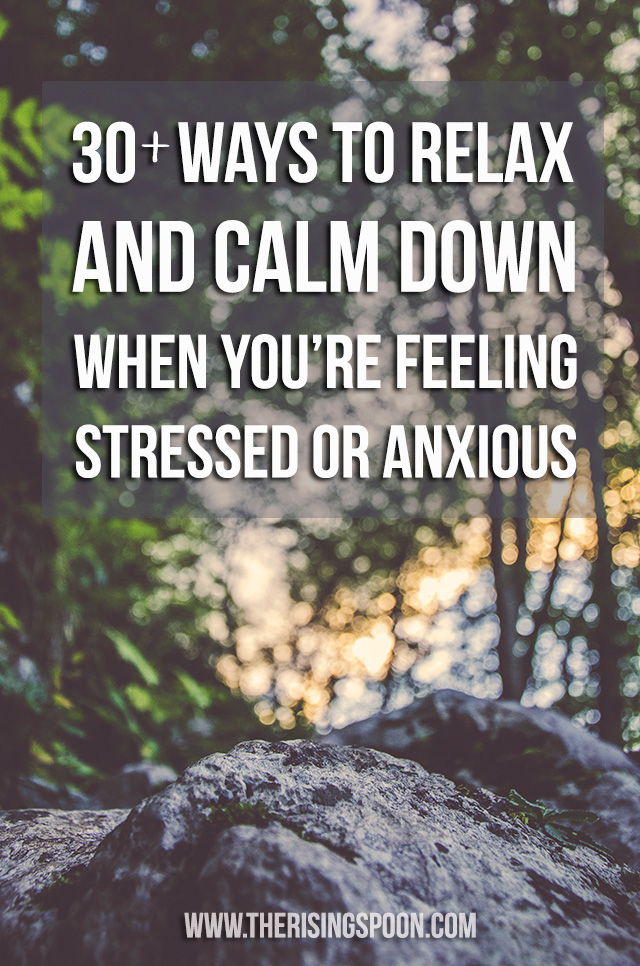 And when a person begins to experience anxiety, you need to sit in a secluded place and think about your ideal place to relax. It can be any place in the world, real or imaginary, but the place must feel happy, peaceful, and safe. You should think about all the small details, for example, how it smells, what time of year or time of day it is. You need to imagine yourself in this “happy place”, close your eyes and slowly and regularly inhale through your nose and exhale through your mouth until a feeling of peace comes. You can visit the "happy place" every time anxiety appears.
And when a person begins to experience anxiety, you need to sit in a secluded place and think about your ideal place to relax. It can be any place in the world, real or imaginary, but the place must feel happy, peaceful, and safe. You should think about all the small details, for example, how it smells, what time of year or time of day it is. You need to imagine yourself in this “happy place”, close your eyes and slowly and regularly inhale through your nose and exhale through your mouth until a feeling of peace comes. You can visit the "happy place" every time anxiety appears.
3. Muscle relaxation.
When a person feels restless, he may notice muscle tension. It's muscle stress that can make it harder to deal with anxiety. By relieving muscle tension, anxiety levels can usually be reduced. For this you need:
- Sit in a comfortable place, close your eyes and focus on your breathing. Inhale slowly through your nose and exhale through your mouth. Clench your hand into a fist and hold your hand in this position for a few seconds.
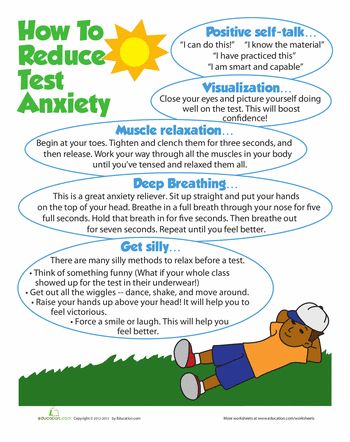 Next, you need to slowly open your fingers. After this exercise, you can notice how the feeling of tension leaves the hand and subsequently the hand will become relaxed.
Next, you need to slowly open your fingers. After this exercise, you can notice how the feeling of tension leaves the hand and subsequently the hand will become relaxed.
One must continue to tense and relax various muscle groups in the body. Depending on your own desires, you can tighten the muscles in a different order or moving up or down.
4. Relaxation, counting.
Counting is an easy way to relieve anxiety. When there is a feeling of approaching anxiety, you need to find a quiet place, close your eyes and slowly count to 10. If necessary, repeat the exercise and count to 20 or even more. You can continue to count until you feel that the anxiety subsides. Often relief comes quickly, but sometimes it can take a while. You should remain calm and patient.
5. Relaxation, interrupting anxious thinking.
It is rather difficult to think clearly when feeling anxious. Sometimes anxious thinking can cause a person to believe thoughts that are not true, or cause them to do things that make the anxiety worse.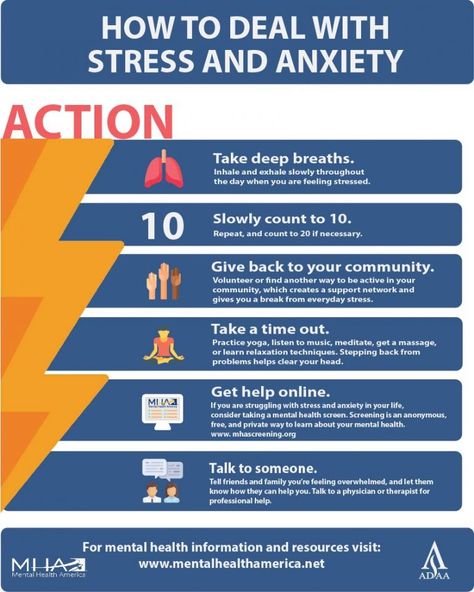 It is useful to break the link of anxious thoughts in order to give yourself the opportunity to think clearly and correctly respond to your thoughts. You should try different ways to interrupt the anxious thought process, such as singing a song about your worries at an upbeat pace or talking about your worries in a funny voice, and also choose a pleasant thought and focus on it, rather than anxiety. It could be a loved one, a “happy place,” or even a pleasant event tonight, such as dinner with friends. You can listen to music or read a book. The main thing is to realize that by switching your attention from anxiety to completing a task, anxiety recedes.
It is useful to break the link of anxious thoughts in order to give yourself the opportunity to think clearly and correctly respond to your thoughts. You should try different ways to interrupt the anxious thought process, such as singing a song about your worries at an upbeat pace or talking about your worries in a funny voice, and also choose a pleasant thought and focus on it, rather than anxiety. It could be a loved one, a “happy place,” or even a pleasant event tonight, such as dinner with friends. You can listen to music or read a book. The main thing is to realize that by switching your attention from anxiety to completing a task, anxiety recedes.
Electronic source:
https://www.healthline.com/health/anxiety-exercises#thought-cycle
to the list of articlesFind a doctor
Exercises to help with anxiety
Anxiety is a normal and natural feeling that everyone experiences at some point in their lives.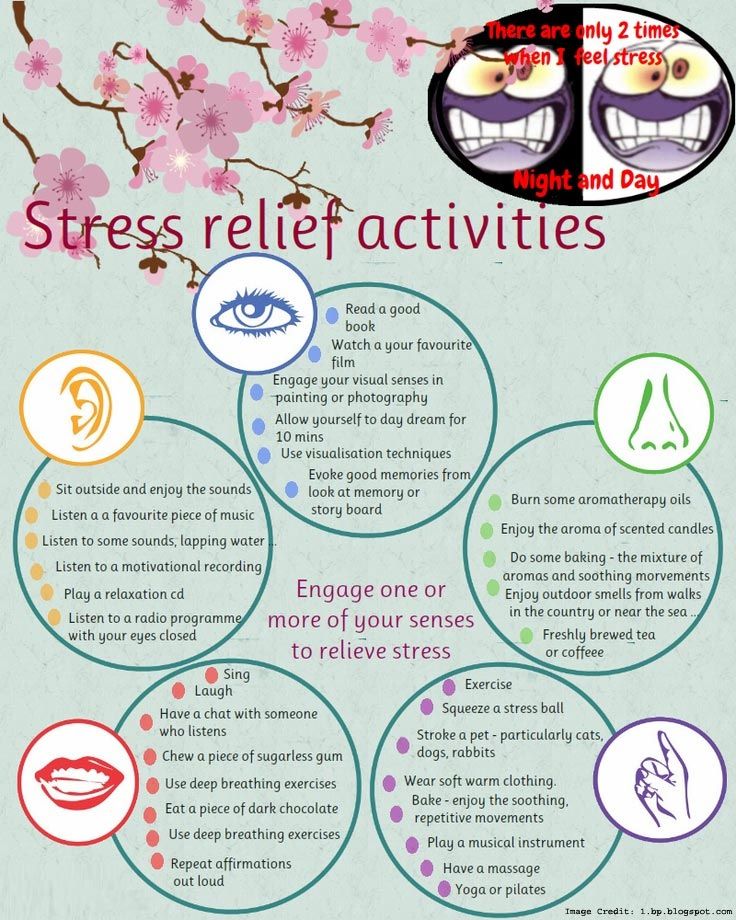 However, sometimes excessive anxiety can get in the way of a healthy and happy life. And overcoming anxiety is not easy. In such cases, quite simple exercises will help to relax and feel relief. To feel relief from feelings of anxiety, the following exercises can be done anywhere and anytime. The main goal is to quickly relax and calm down.
However, sometimes excessive anxiety can get in the way of a healthy and happy life. And overcoming anxiety is not easy. In such cases, quite simple exercises will help to relax and feel relief. To feel relief from feelings of anxiety, the following exercises can be done anywhere and anytime. The main goal is to quickly relax and calm down.
Contents
- 1. Relaxing breath
- 2. Relax by visualizing
- 3. Muscle relaxation
- 4. Relaxation counting
- 5. Relaxation, interrupting anxious thinking
1. Relaxing breath.
During an anxiety attack, the pulse and breathing speed up, excessive sweating and sometimes even dizziness may occur. At such times, breath control can help to relax both body and mind. To take control of your breathing during an anxiety attack, follow these steps:
- Sit in a quiet place. Place one hand on your chest and the other on your stomach.
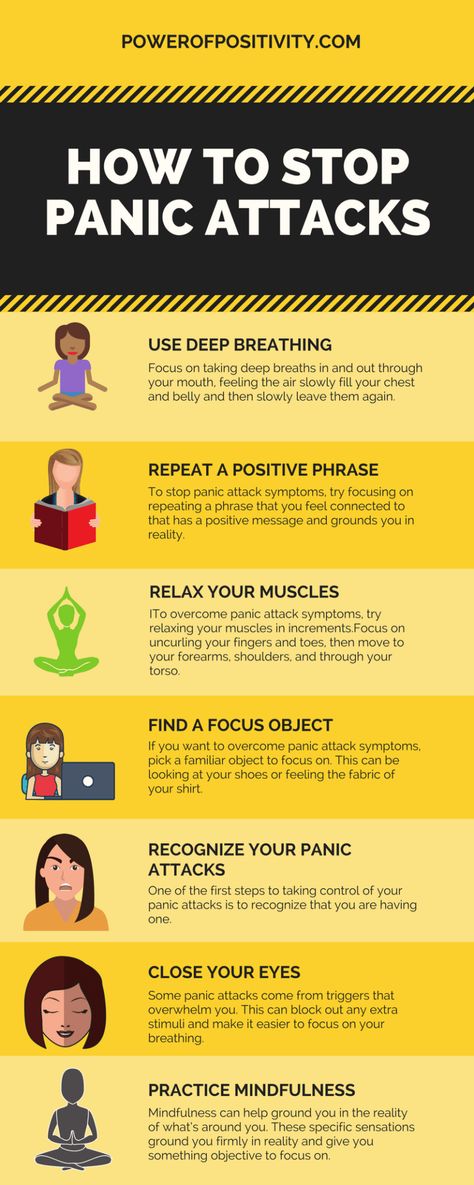 When taking a deep breath, the stomach should move more than the chest. Inhale slowly through the nose and exhale through the mouth. It is necessary to repeat the exercise at least 10 times, or until there is a feeling that the anxiety is decreasing.
When taking a deep breath, the stomach should move more than the chest. Inhale slowly through the nose and exhale through the mouth. It is necessary to repeat the exercise at least 10 times, or until there is a feeling that the anxiety is decreasing.
2. Relax by visualizing.
Probably every person is familiar with the expression "to find your happy place." Creating a false picture of a place that makes you feel calm can actually calm your mind and body. And when a person begins to experience anxiety, you need to sit in a secluded place and think about your ideal place to relax. It can be any place in the world, real or imaginary, but the place must feel happy, peaceful, and safe. You should think about all the small details, for example, how it smells, what time of year or time of day it is. You need to imagine yourself in this “happy place”, close your eyes and slowly and regularly inhale through your nose and exhale through your mouth until a feeling of peace comes.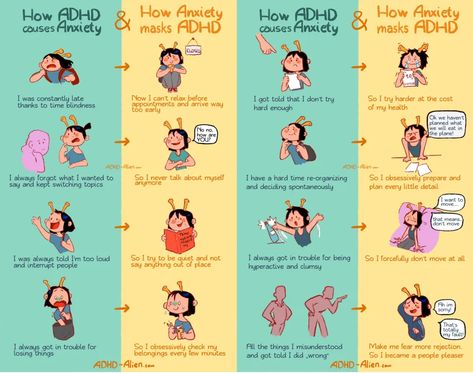 You can visit the "happy place" every time anxiety appears.
You can visit the "happy place" every time anxiety appears.
3. Muscle relaxation.
When a person feels restless, he may notice muscle tension. It's muscle stress that can make it harder to deal with anxiety. By relieving muscle tension, anxiety levels can usually be reduced. For this you need:
- Sit in a comfortable place, close your eyes and focus on your breathing. Inhale slowly through your nose and exhale through your mouth. Clench your hand into a fist and hold your hand in this position for a few seconds. Next, you need to slowly open your fingers. After this exercise, you can notice how the feeling of tension leaves the hand and subsequently the hand will become relaxed.
One must continue to tense and relax various muscle groups in the body. Depending on your own desires, you can tighten the muscles in a different order or moving up or down.
4. Relaxation, counting.
Counting is an easy way to relieve anxiety. When there is a feeling of approaching anxiety, you need to find a quiet place, close your eyes and slowly count to 10. If necessary, repeat the exercise and count to 20 or even more. You can continue to count until you feel that the anxiety subsides. Often relief comes quickly, but sometimes it can take a while. You should remain calm and patient.
If necessary, repeat the exercise and count to 20 or even more. You can continue to count until you feel that the anxiety subsides. Often relief comes quickly, but sometimes it can take a while. You should remain calm and patient.
5. Relaxation, interrupting anxious thinking.
It is rather difficult to think clearly when feeling anxious. Sometimes anxious thinking can cause a person to believe thoughts that are not true, or cause them to do things that make the anxiety worse. It is useful to break the link of anxious thoughts in order to give yourself the opportunity to think clearly and correctly respond to your thoughts. You should try different ways to interrupt the anxious thought process, such as singing a song about your worries at an upbeat pace or talking about your worries in a funny voice, and also choose a pleasant thought and focus on it, rather than anxiety. It could be a loved one, a “happy place,” or even a pleasant event tonight, such as dinner with friends.